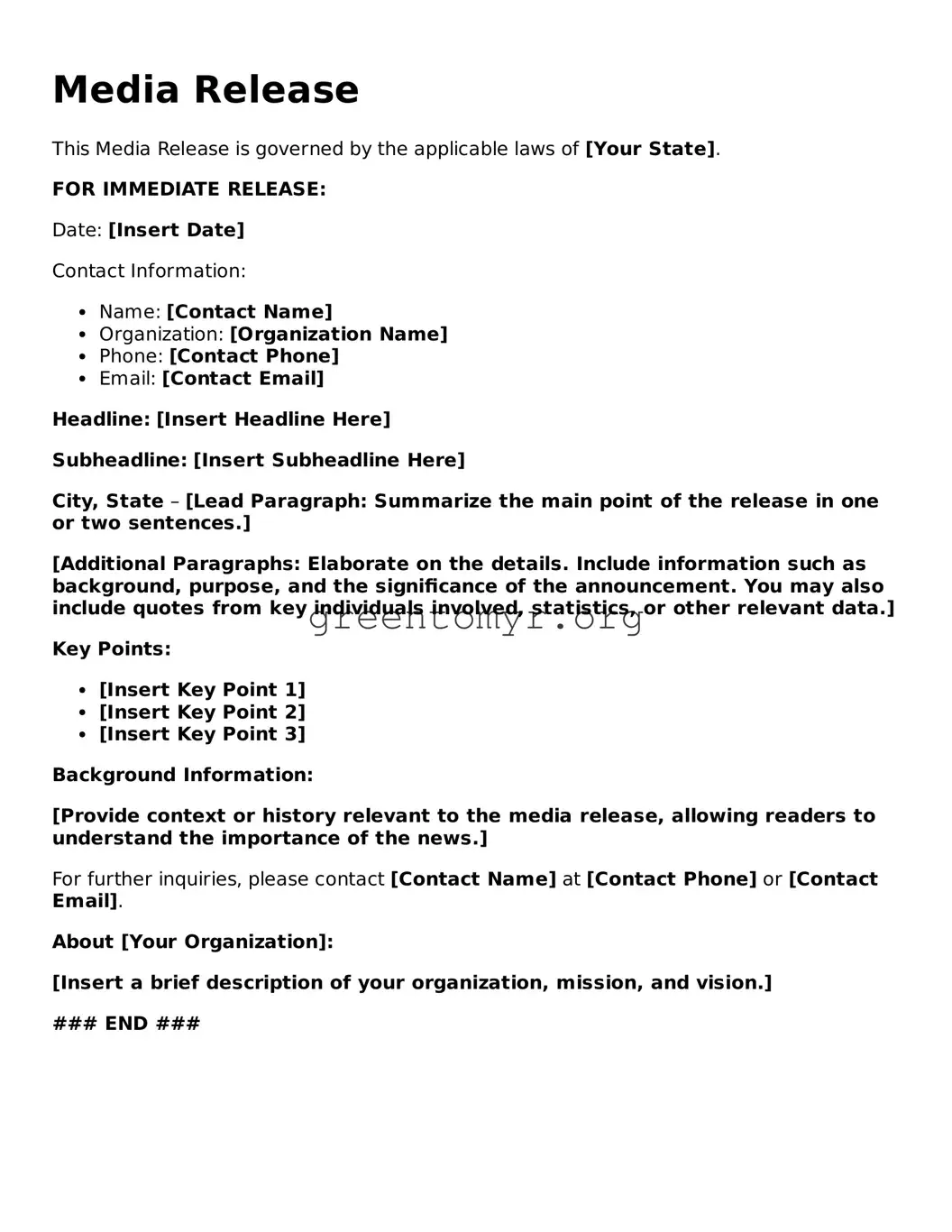Media Release
This Media Release is governed by the applicable laws of [Your State].
FOR IMMEDIATE RELEASE:
Date: [Insert Date]
Contact Information:
- Name: [Contact Name]
- Organization: [Organization Name]
- Phone: [Contact Phone]
- Email: [Contact Email]
Headline: [Insert Headline Here]
Subheadline: [Insert Subheadline Here]
City, State – [Lead Paragraph: Summarize the main point of the release in one or two sentences.]
[Additional Paragraphs: Elaborate on the details. Include information such as background, purpose, and the significance of the announcement. You may also include quotes from key individuals involved, statistics, or other relevant data.]
Key Points:
- [Insert Key Point 1]
- [Insert Key Point 2]
- [Insert Key Point 3]
Background Information:
[Provide context or history relevant to the media release, allowing readers to understand the importance of the news.]
For further inquiries, please contact [Contact Name] at [Contact Phone] or [Contact Email].
About [Your Organization]:
[Insert a brief description of your organization, mission, and vision.]
### END ###
